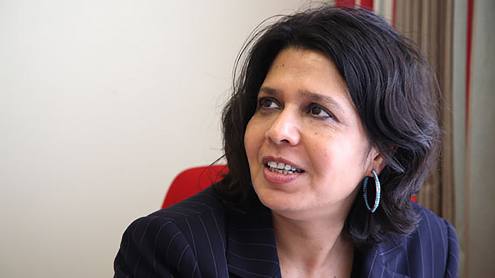I was talking about the big challenges of creating a digital bank, and was reminded of the approaches that banks take to do this. The first is the hardest, namely to take on the transformation of the existing bank.
A transformational bank process – where the whole bank’s business model is turned on its head to move from physical to digital foundations – is just too difficult for most. It is also too risky for most. Hence, they fudge it. They add budget to invest in digital while also investing in dusting up their branches, adding more people in compliance and audit, juggling the sale of non-core assets while also thinking about the acquisition of new assets. In other words, they are a bank that is spinning plates.
The trouble with this bank is that plates can often drop and, if too many plates require too much focus, that is likely to happen. And that is what I think is happening with big incumbent banks thinking about evolution to digital. First, the terminology is wrong. These banks are thinking about digital as a channel, appointing a head to run the digital function and assigning the function a budget. Job done.
The thing is, the job is not done as this is a core foundation of the future bank, not an adjunct. It’s not a channel or a function therefore.
Too many plates
The problem is that banks like to assign things to boxes, or plates, continuing the prior metaphor. So you have the digital bank plate; the retail bank plate (which looks after the branches, separate from the digital plate); the regulation plate; the compliance plate; the payments plate; and so on.
All these plates are spinning separately, and all require attention. As a result, some plates get dropped, but it doesn’t matter as long as you can pick it up and spin it again. So the digital bank app is rolled out and now someone is demanding that you roll out the next service: the wearable app, the internet of things app, the data analytics program, etc. You just start spinning a new plate and things keep going.
But this approach is not working in the long term as the new financial technology world isn’t spinning plates. Instead, new start-ups are a plate to themselves. They’re attacking the business by just having one plate on the table. It’s not spinning and, as a result, it works non-stop to disrupt your spinning plates.
That’s what we’re seeing with these thousands of new companies out there focusing just on digital, retail user experience, payment and so on. This means that the multi-spinning universal bank is dropping its plates faster and faster thanks to regulation and innovation. So what’s the answer?
Start a new bank of course.
Spinning out
I see a lot of incumbent banks feeling the frustration of spinning too many plates and, as digital demands transformation and it’s far too difficult, they’re investing in launching 'NewBank' instead. NewBank gets a big budget and spins out of old bank.
A good example of such an operation is Hello Bank, an offshoot of BNP Paribas. Hello Bank was launched in May 2013 with the ambition of gaining 1.4 million customers by 2017 in Germany, Belgium, France and Italy, of which two-thirds would be new customers to BNP, rather than existing account holders.
The bank invested €80m in developing and launching the bank two years ago and today it has already achieved a good number of customers. Figures vary from anywhere between 800,000 and 1.3 million, but one statistic that is freely quoted is that the bank has gained 350,000 customers in Belgium, heading towards 400,000, and 70% of customers do more than 10 transactions per month.
These are impressive numbers and show that BNP has been serious about building its NewBank. In the case of BNP’s Hello, it is clear that the offshoot needs to be run as a separate bank, with a separate management team and a budget to succeed. It cannot just be a pilot or a project or an offshoot adjunct run under the core bank umbrella.
So whether a bank is transforming or launching a NewBank, neither approach is easy and it all comes back to leadership. Does your leader have the stomach to make the change happen? Equally important, does your leader have the backing, the budget and the board behind them to make the change happen?
If yes, you’re good to go. If no, what are you doing?
Chris Skinner is an independent financial commentator and chairman of the London-based Financial Services Club.






